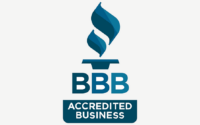Canonicalization Is A Ranking Factor Or Not?
What is Canonicalization? Canonicalization is conflating ranking signal that comes from multiple URLs, into a one canonical URLs. The tool which is used for this process is called rel=”canonical” tag. There is a connection between canonicalization and ranking signals. But the question is would it directly affect to organic ranking. Canonicalization is a ranking factor or not? Let’s look at it more.
The Claim of Canonicalization Is a Ranking Factor or not?
Before making final decision about canonicalization is a ranking factor or not, let’s dive into more about rel=”canonical” tag. It is an HTML tag. When there are multiple versions of pages are exist in the same site, this tag is used to tell Google which version to be shown in the SERPs.
rel=”canonical” tag mostly used when there are duplicate URLs in one site. Google doesn’t like to show the same content in SERPs. Therefore it choose one from those duplicate URLs. We can tell Google to choose the URL that we want using rel=”canonical” tag. But it is just a suggestion and not a directory.
Google doesn’t guarantee to exactly show that URL. Google can ignore it. In addition to do it, people believe this tag might forward ranking signals from one URL to another URL. Besides that, this tag can use when republishing a content also.
The Evidence for Canonicalization is a Ranking Factor
There is a chapter about using canonicalization to consolidate duplicate URLs in Google’s advanced SEO guide. But there is no mention about the fact that canonicalization is a ranking factor, in that guide, even though there is whole chapter.
Google’s John Mueller has mentioned about canonicalization during his one of SEO Q&A sessions. Muller has recommended to site owners and developers to use rel=”canonical” tag, if there are duplicate contents. Then it will combine ranking signals into one URL. What he said is given below.
” If there are duplicate URLs, I would like to recommend to use rel=”canonical” tag, instead of noindex. Using noindex tag, which means you are saying Google not to show that page at all. If you use rel=”canonical” tag, which means you are saying Google that page is same as other page. Then we can collect all the signals of both pages and combine them into one page. If you use noindex tag or block that page with robots, then all the signals that page have will be lost. “
According to Muller, its confirm that Google can combine ranking signals from duplicate URLs into one URLs. But it doesn’t mean canonicalization is a ranking factor.
Final thoughts
Canonicalization has a connection with organic rankings. But it doesn’t say canonicalization is a ranking factor. This tag is used to combine ranking signals which are from multiple URLs into one URL. If you use it correctly, Google can ignore it and choose another calonical URL instead. rel=”canonical” is more likely to be a suggestion than being directory. It not a ranking factor for sure.
Related Posts
Frequently Asked Questions
What do canonicalization issues belong to?
Canonical problems are most frequently seen on websites with many URLs that contain the same or similar content. They can also be brought on by search criteria on e-commerce sites and by syndicating or publishing content on several sites, however they are frequently the result of improper redirects.
Can I change canonical URL?
A blog post’s or page’s canonical URL can be manually added or changed. Your canonical URL settings will be superseded by canonical URLs set in this manner. Navigate to Marketing > Website > Website Pages in your HubSpot account to access your content.
What is a canonical attribute?
Multiple URLs with the same content can be combined using the canonical attribute or tag, which tells search engine crawlers which URL needs to be crawled and indexed. It is not unusual for a website to have many URLs with content that is same or very similar.


